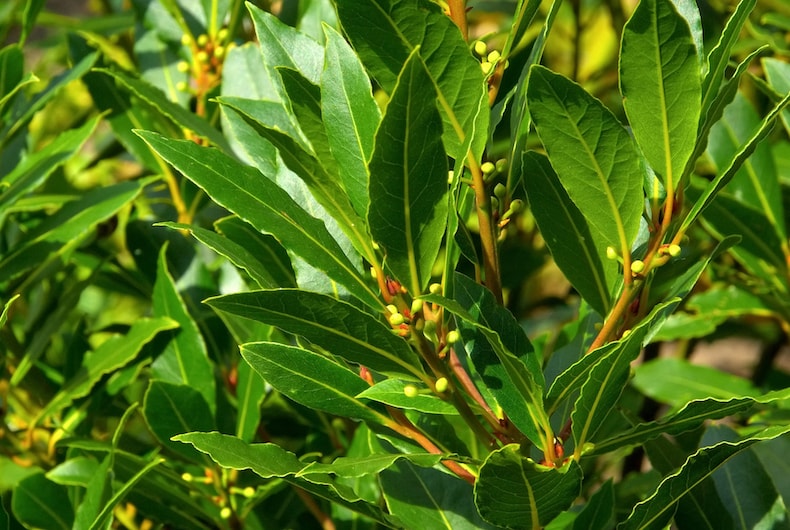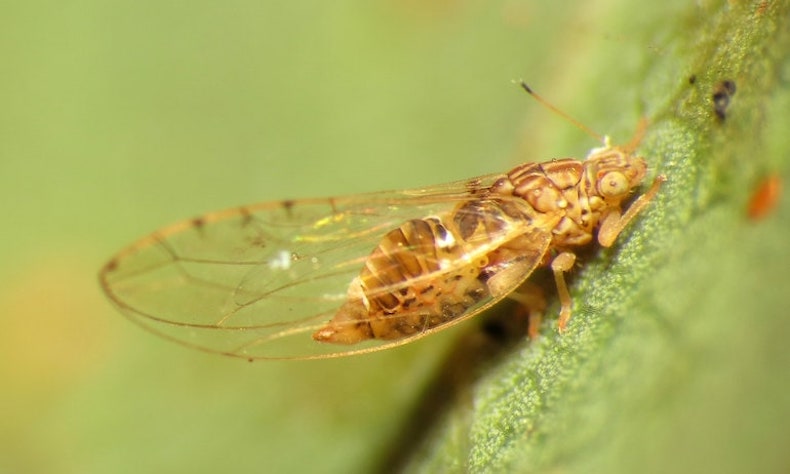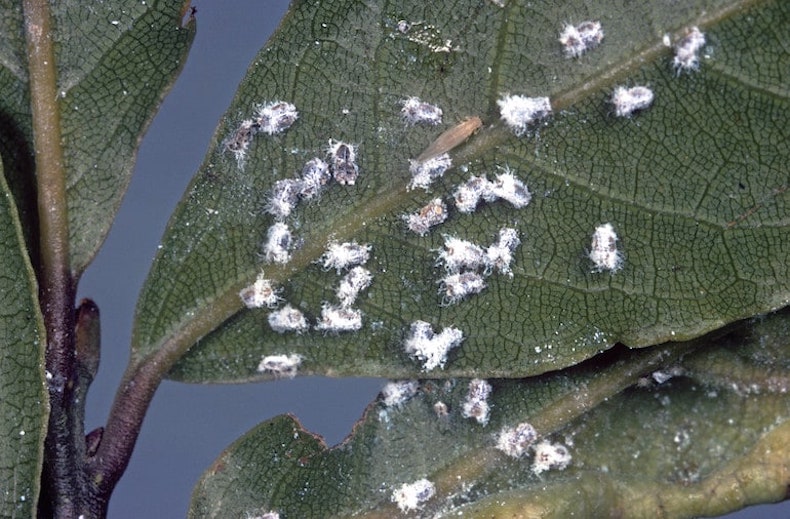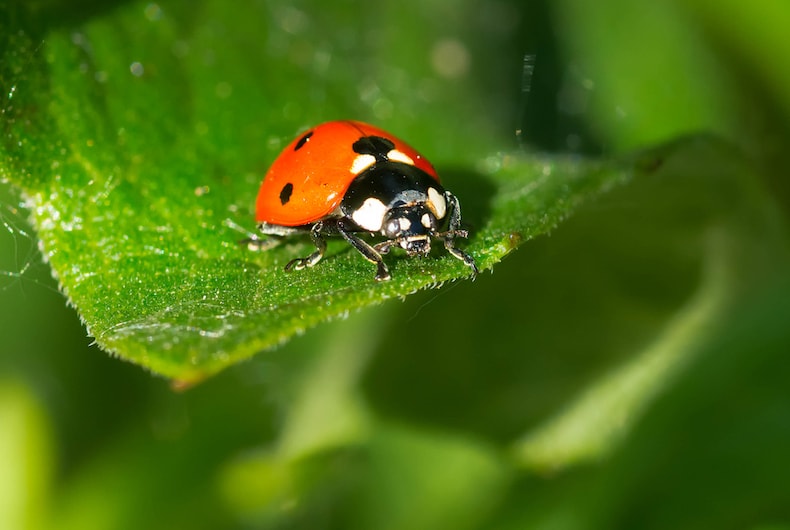Garden pests - Bay tree suckers

Know the signs of bay tree sucker damage before it affects your shrub
Image: Laurus nobilis from Thompson & Morgan
Is your bay tree showing signs of distress? If the leaves appear damaged or diseased, bay tree suckers may have set up home in your garden. Here’s how to deal with that.
Why are my bay tree leaves yellow and curled?
Bay Suckers are probably the cause. These are sap-sucking insects which are active in the summer months. The symptoms are yellowing leaf margins which become thickened and curled.
What are bay tree suckers?

Small but mighty, these psyllid can cause significant damage to your bay trees
Image: Katja Schulz
The bay tree sucker (Trioza alacris) is a psyllid - a type of sap-sucking bug that looks like a pale brown aphid (about 2mm in length).
Adult suckers emerge from hibernation in the spring, laying eggs which hatch into scaley larvae that produce lots of white, wooly wax.
How to recognise bay tree sucker damage

The nymphs from bay tree suckers are very obvious to spot
Image: RHS/R.Scase
Bay sucker damage is easy to spot. Here are the signs:
- Distorted, thickened leaves that curl down at the margins and turn yellow. (Often only half the leaf is affected).
- Small, grey-white nymphs on the underside of leaves or in the margins. These nymphs protect themselves with a wooly white wax.
- Sticky leaves from the honeydew excreted by the suckers.
- Black sooty mould growing on the sticky honeydew.
What plants do bay tree suckers eat?
Bay tree suckers feed exclusively on the sap of bay leaves.
How can I control bay tree suckers?

Keep pests numbers down by encouraging ladybirds into bay trees
Image: Paul Reeves Photography/Shutterstock
As these insects are usually hidden inside curled leaves, topical insecticides are unlikely to have much effect on controlling populations. Here are some more effective ways to control bay tree suckers:
- Remove curled leaves in the spring - keep an eye out for affected leaves early on in the year. Remove any curled leaves and destroy them - do not compost!
- Clear away dead leaves - keep the ground clear of old bay leaves where adult bay suckers like to hibernate over the winter.
- Encourage ladybirds - ladybirds are very effective predators of the bay sucker. Encourage ladybirds into bay trees to help keep the numbers down.
- Prune away infestations in midsummer - trim light infestations away in the middle of summer and for a couple of weeks afterwards. Stop pruning after this time to give new shoots the chance to harden up before winter.







